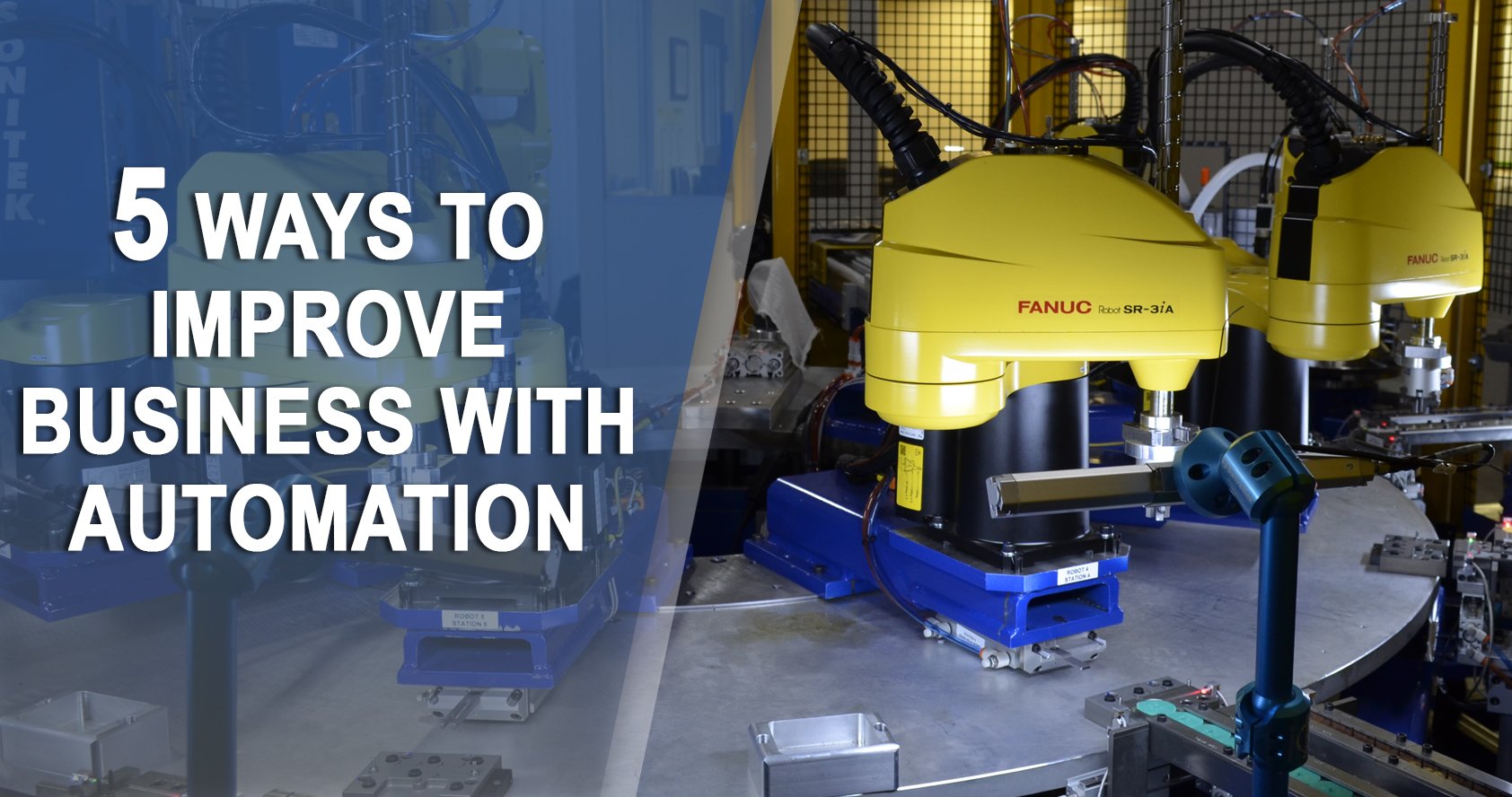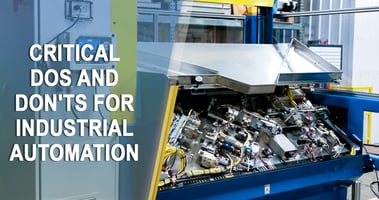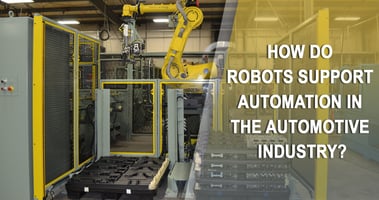As consumers evolve, so do their expectations for manufactured goods. This evolution—among other...
5 Ways a Successful Manufacturing Automation Integration & Rollout Improves Business Outcomes

Manufacturing automation has been permeating the very fabric of the industry for quite some time now, evolving not only company operations, but also potential capabilities and the workforce as a whole. Applications in both fixed automation and robotics have the power to bring immense value to organizations that embrace the significance of automated solutions. While many manufacturing executives understand this concept in theory, there are those that question whether a specific integration project can actually improve their business.
Whether you’re brand new to the automation scene or have a good amount of experience under your belt, you may have lingering uncertainties about whether manufacturing automation can really address your business’s current challenges and improve the bottom line. The truth is that not all integration and rollout projects are created equal, but the expertly managed ones are incredibly successful at improving business outcomes.
So, what does a successful approach look like, and what types of business outcomes can it render? Let’s start with the first question.
Elements of a Successful Integration Project
The following foundational elements comprise an effectively planned integration and rollout of an automated manufacturing system.
- Strategy: This involves determining where automated solutions have the potential to create efficiencies, cost savings, and bottom-line growth. It’s about identifying what your business seeks to achieve and understanding how automation serves that bigger picture.
- Team: The process should be guided internally by a well-defined leadership team consisting of a P&L leader, an operations leader, and an engineering leader. This way, you have the ability to detail capital and budget realities, incorporate a deep understanding of the business’s manufacturing operations, and refer to the technical savvy of someone who will run the system.
- Professional Integrator: Partner with a reputable system integrator that has a wealth of experience in your particular area of business. Managing the complicated logistics of your entire interconnected system requires the kind of expertise that only a dedicated integration specialist—with experience in your specific line of work—can provide.
- System Design & Build: You’ll need to work with your leadership team and integration specialist prior to installation in order to design a customized scheme that makes sense for both the business and the integrator. As you work together to hammer out these details, there should be discussion around issues like the equipment’s life span and the system’s flexibility for future retooling.
- Installation: Whether you’re automating existing equipment or bringing in a completely new system, there will be a period of time when the automation needs to be installed. The logistics of this process, as well as the length and scope of potential downtime, will depend on the specifics of the automation project.
- Training & Launch: Together with the integrator, you’ll determine what skills need to be learned by operators and how that training will take place. Only properly trained personnel should be authorized to operate the equipment. Once the training is managed and the installation is complete, the system will launch into production.
Post-Rollout Business Improvements
At the culmination of this process, the business is apt to see improved outcomes as soon as production ramps up. The following vital competitive advantages can be expected from a successful manufacturing automation integration and rollout.
1. Reduced Operating Costs
Automation sets the business up for a decrease in operating expenses. This decrease is largely driven by a reduction in labor, but it could also be a product of a more consistent manufacturing process, which ultimately minimizes scrap. Obviously, the less waste there is, the lower your operating costs will be.
2. Improved Throughput
Automation is also known for improving the throughput of certain manufacturing processes. Maximized throughput impacts profitability in two significant ways: 1) with greater throughput, you create a larger inventory of products to sell, and 2) greater consistency means you’re able to do so at a lower operating cost.
3. Quantifiable Growth
Particularly for manufacturing companies owned by private equity firms, there’s a major focus on sustainable growth. These firms are in the business of maximizing profitability, and one of the smartest ways to do that is by automating current processes. Manufacturing executives who must report to a board on how they’re going to accomplish growth plans are familiar with what it takes to garner approval. Automation’s contribution to profitability makes a strong case for quantifiable growth.
4. Low-Risk ROI
When a growth plan involves designing a new product and going to market with it, there’s often a high risk of seeing performance numbers that don’t meet projected expectations. When it comes to automating current processes for an existing product, however, deviations in performance are no longer a factor. The risk is simplified by straightforward ROI calculations.
5. Customization, Flexibility & Reliability
Automation can be customized to the very specific needs of a manufacturing operation and designed to accommodate changes in product or process specifications down the road. This means there are no cookie-cutter requirements for ROI. In fact, there’s a distinct opportunity to achieve profitable outcomes based on a unique design and build that accounts for the individual challenges and realities of your business. And for executives interested in adopting robotics solutions, it should be noted that industrial robots are some of the most reliable and flexible pieces of equipment in a factory.
Realities of the ROI Timeline
Because a successful integration involves performing the ROI calculations up front, you’ll already have a pretty clear idea about what to expect in this regard. Once the automated manufacturing equipment is launched, there may be a brief learning curve, but in short order you should see validations for your ROI in progress.
If, for example, your goal is labor reduction or productivity gains, you should be able to see the changes unfolding. Whereas you once had operators working an eight-hour shift (seven hours of actual production when you factor in lunch and breaks), now you’ll see an increase in productivity because the machines can run through breaks and shift changes, and potentially at an accelerated speed. This equates to both increased production and decreased labor requirements—an immediate boost in the direction of your ROI goals.
Then, there are the longer-term outcomes that many executives sometimes overlook, though their value should not be ignored. These include advantages like worker retention, labor stability and smarter human resource allocation. Think about the rising costs of continually having to replace workers, or what’s being sacrificed when your HR team has to spend so much time hiring new people that they’re unable to prioritize efforts that have a major impact on the business, like compliance, culture and safety training. The same could be said for safety and ergonomic concerns: over a period of time, your automated system begins to chip away at your average number of worker’s comp claims, saving substantially in the long run.
In the end, the question over whether automation can improve your business outcomes boils down to the success of your integration and rollout. It’s not an easy process, but when you make informed decisions and rely on the expertise of a reputable integration partner, the potential for immense ROI is tangible.


.jpg?height=200&name=Blog%20Post%2023%20-%20Mahan%20Approved%20(1).jpg)
